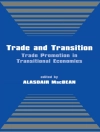It is commonly assumed that slavery came to an end in the nineteenth century. While slavery in the Americas officially ended in 1888, millions of slaves remained in bondage across Africa, Asia, and the Middle East well into the first half of the twentieth century. Wherever laws against slavery were introduced, governments found ways of continuing similar forms of coercion and exploitation, such as forced, bonded, and indentured labor. Every country in the world has now abolished slavery, yet millions of people continue to find themselves subject to contemporary forms of slavery, such as human trafficking, wartime enslavement, and the worst forms of child labor. The Anti-Slavery Project: From the Slave Trade to Human Trafficking offers an innovative study in the attempt to understand and eradicate these ongoing human rights abuses.
In The Anti-Slavery Project, historian and human rights expert Joel Quirk examines the evolution of political opposition to slavery from the mid-eighteenth century to the present day. Beginning with the abolitionist movement in the British Empire, Quirk analyzes the philosophical, economic, and cultural shifts that eventually resulted in the legal abolition of slavery. By viewing the legal abolition of slavery as a cautious first step—rather than the end of the story—he demonstrates that modern anti-slavery activism can be best understood as the latest phase in an evolving response to the historical shortcomings of earlier forms of political activism.
By exposing the historical and cultural roots of contemporary slavery, The Anti-Slavery Project presents an original diagnosis of the underlying causes driving one of the most pressing human rights problems in the world today. It offers valuable insights for historians, political scientists, policy makers, and activists seeking to combat slavery in all its forms.
Cuprins
Introduction: The Anti-Slavery Project
PART I: THE BRITISH EMPIRE AND THE LEGAL ABOLITION OF SLAVERY
1. A Short History of British Anti-Slavery
2. British Anti-Slavery and European International Society
3. British Anti-Slavery and European Colonialism
PART II: LINKING THE HISTORICAL AND CONTEMPORARY
4. The Limits of Legal Abolition
5. Defining Slavery in All Its Forms
PART III: CONTEMPORARY FORMS OF SLAVERY
6. ‘Classical’ Slavery and Descent-Based Discrimination
7. Slaves to Debt
8. Trafficked into Slavery
Conclusion: Contemporary Slavery in the Shadow of History
Notes
Index
Acknowledgments
Despre autor
Joel Quirk is Senior Lecturer of Political Studies at the University of the Witwatersrand. He is author of Unfinished Business: A Comparative Survey of Historical and Contemporary Slavery, and co-editor of several volumes including International Orders in the Early Modern World: Before the Rise of the West.












